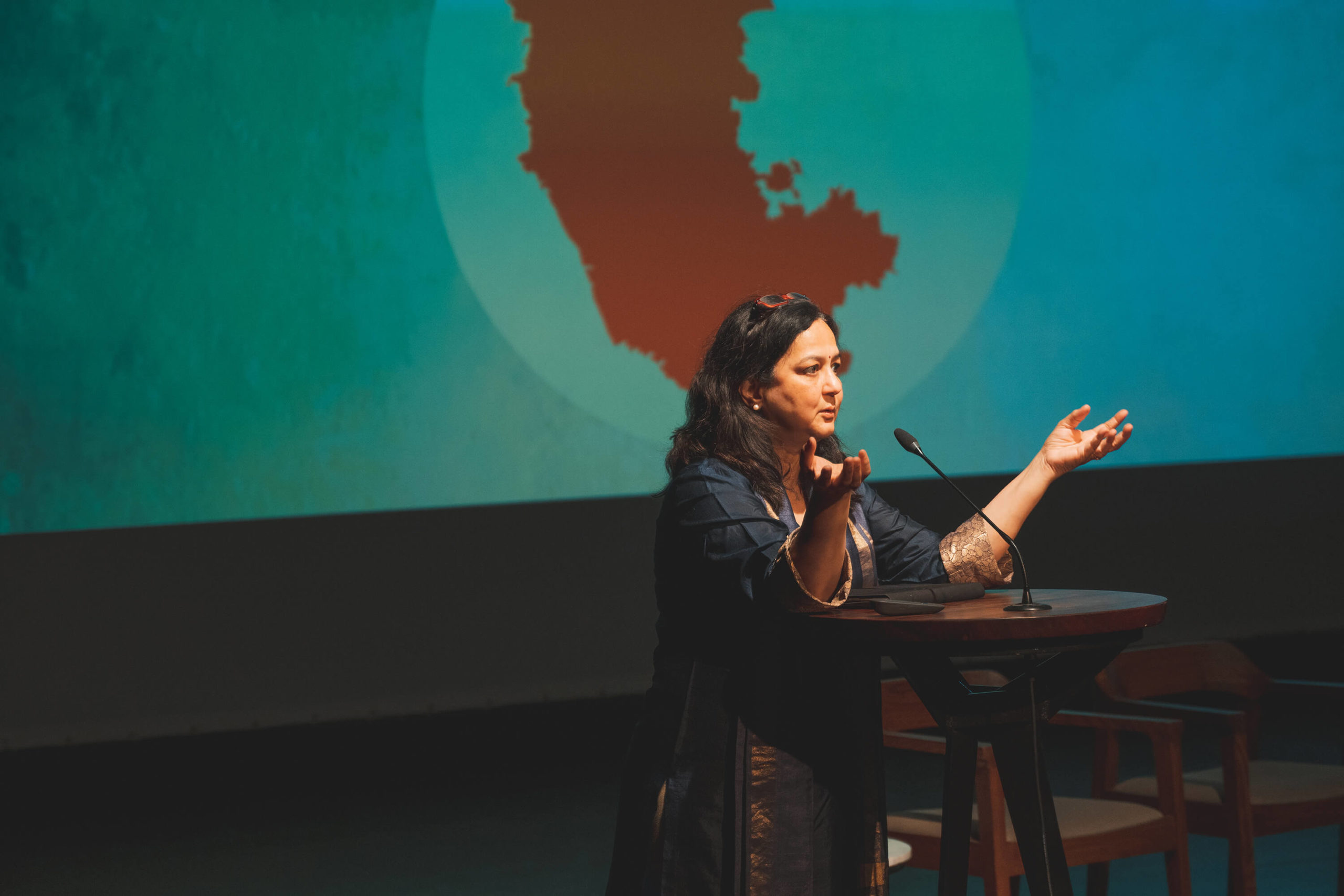When I first graduated from college in Lucknow, I found that there weren’t a lot of opportunities for me in the city. I knew I wanted a career, and so I moved to Mumbai in search of one. However, I understood early on that while I might have had the hard skills for the jobs I was applying to, I did not have the soft skills that young people from Mumbai did.
Despite this I did get a great job at a company in Pune, where I had mentors who saw my potential and built me up personally and professionally. Importantly, it was here that I became aware of how much I liked training and coaching young people who joined my team.
Eventually, I realised that corporate culture was not for me. I left Pune in 2011, and returned to Lucknow in search of other opportunities. That is when I met Chris and Byomkesh, founders of Medha, a nonprofit that helps young people improve employability skills and employment outcomes. They were looking for someone to help them with curriculum development. Although I had no background in, and no understanding of, curriculum, I could immediately relate to the work they were trying to do as well as their vision. And so, I agreed to join them.
Early days at Medha
I was the first employee at Medha, and in the initial days Chris, Byomkesh, and I spent hours developing the curriculum, building college and corporate partnerships, figuring out marketing strategies, and hiring people to take our vision forward.

We didn’t want to create yet another parallel education system, a practice that is so prevalent in Uttar Pradesh (UP). Even today, across the state, you’ll find thousands of coaching institutes that teach English or prepare students for government jobs. We believed that these skills should be taught on campus itself. We wanted our students to pick up abilities that would make the transition from education to employment a smooth one.
As a result, we focused on communication skills, building confidence, and industry exposure through talks, visits, and internships to better prepare them for their first job. We wanted young people to know what they were getting into—what a BPO (Business Process Outsourcing) job looks like, what sales entails, and so on—and what soft skills they would need to excel in those environments.
We kept testing and refining our programme for the first two years, preparing ourselves for the right opportunity. And then it came along. We got a chance to present our experiential learning model to the chief secretary of UP, along with the principal secretaries of higher education and technical education, and 10 district magistrates. We were given the go-ahead to pilot our programme with 10 degree colleges and five polytechnics across six districts in the state. We were excited to expand from one district to six districts, from three colleges to 18, and from 300 students to our potential 5,000+ students.
(Attempting to) scale the Medha model
The opportunity we had been given was huge, but so was the challenge. When we began preparing for scale, we made our first mistake—we based our decisions on assumptions. Here are some of the assumptions we made, and the reasons they didn’t work:
1. Students and their families wanted what we had to offer
We had tested our model in Lucknow, and it had worked. However, the colleges we had worked with were urban institutions, where the students had more exposure and were already motivated. We didn’t realise that government colleges in remote parts of UP had their own unique set of demands.
We found that while we got student registrations from government colleges, on campus attendance was very low. This was because the colleges were in remote locations and our students, many of whom were from low-income households, couldn’t afford to make the trip on a daily basis. This meant that on different days of the week, different students were coming in. Thus, we were unable to have a fixed set of students who could complete their training, which was basically a 30-hour career advancement boot camp programme.
Overall, it seemed like our model was falling apart. Our team understandably began to get demotivated and frustrated.
Our team tried everything. They were all young people—college educated, passionate, and highly motivated. When faced with low attendance, they tried approaching the parents to convince them to send their wards to college. Parents had their own compulsions—they needed their children around to help with agricultural activities at home. Their motivation for sending their children to college was only the degree, as it would help their daughters get married and their sons apply for government jobs.
Even the students we were able to place in internships were having a hard time. If their company was in the city and didn’t compensate for their transport costs, the students couldn’t show up for work. Overall, it seemed like our model was falling apart. Our team understandably began to get demotivated and frustrated, and with each new thing we tried, our programme costs kept shooting up.
2. Industry will be keen to hire young people with life skills
Since we were essentially a students’ organisation, we had not invested our energies in working with companies. However, our students ultimately needed to get absorbed by industry. Soon we realised that industry either wasn’t interested or didn’t have the capacity to take these students on.
While the companies we approached thought our students had better aptitude than other young people in the market, none of them felt our students were better skilled. While Medha’s programme equipped young people with soft skills, we realised that they could not get jobs based on their confidence and communication abilities alone. The reality was that our students didn’t have hard skills, such as computer proficiency, that they needed to get jobs. Even those graduating from technical colleges did not know the basics of engineering.
3. Talent will solve everything
To work with students at this scale, we created two pillars to our programme: student training and industry interface. Separate teams were created for each, and we tried to hire what we thought was the best talent for the job.
The number of students in our programmes kept growing rapidly. However, opportunities with industry were limited.
The employer relations team, which interacted with industry, comprised senior business development professionals who had worked in corporates before. We hired them because we thought they would be best positioned to talk to companies and get our students placed in them. However, we didn’t realise that people from a corporate background have a different mindset, with many only focused on achieving the numbers.
Initially I spent time with them, mentoring them, telling them about our values and what we wanted to achieve. But as we grew, the pressure of numbers followed, and we passed on that pressure to them. The number of students in our programmes kept growing rapidly. However, opportunities with industry were limited, and the quality of employers became a big concern. This meant that even after internships and exposure visits, our students were not learning anything.
Our core value—student centrism—was at stake, and the organisational culture was becoming like that of a sales company where everyone was running after numbers. Employment outcomes dipped, and our team’s morale was affected. The employer relations team couldn’t survive, and there were mass resignations.
Needless to say, all this affected me badly. I spent a lot of time reflecting on what went wrong and talking about it. And this is what I learned.
Our learnings
1. Prepare for growth—do the research
The mistake we made was growing the programme based on assumptions about growth, stakeholder behaviour, skills required, and so on. We did not do any detailed analysis on how we would achieve this growth and what it would take, how many industries were out there, what kind of small and medium enterprises (SMEs) we needed to target, and the hurdles we would face in the process.
At the crux of it, we just hadn’t planned for scale. We were only solving problems as they came up. And as a result, we lost out on almost two years of work at Medha. On the other hand, it also taught us what we know now. Today we are aware of the importance of building a long-term strategy based on an analysis of market opportunity, stakeholder appetite, drivers, and barriers. And implementing what we learned has allowed us to rework our model and keep the essence of Medha alive.
2. Build around the core values of the organisation
Medha was conceptualised as a student-centric model. When we began to scale, however, we found that it was not possible for our student relation managers (SRMs) to keep up with training, handholding, and placing such a large volume of youngsters. The model wasn’t feasible as one sought to scale. In order to make it work, while staying true to our core values, we had to narrow our scope of work. Therefore, we decided to work with only active colleges, focus on final-year students first, and create regional career centres for better connectivity.
3. Compliance is hard but extremely important
Monitoring the work of a large, remote team was difficult. When we began to do random checks by calling 50–100 students to ask what they had learned in their sessions, we found that students weren’t attending the sessions they were supposed to.
It wasn’t long before we realised that we would have to create processes for compliance, data collection, and analysis. And our existing team wasn’t equipped to do any of this. Consequently, we set up a knowledge branch in our team. These were the people who looked at monitoring and impact, compliance, and data. They told us what was working and what wasn’t, and allowed us to make informed decisions for future action.
4. Having a strategy is critical, but communicating it is even more so
Not having a clear long-term strategy creates a disconnect internally. Our vision was always strong; however, we didn’t have as much clarity on our organisation strategy. We also didn’t communicate it across the organisation.
If people on the ground do not know how they are contributing to the bigger objective, they act based on their motivation alone. For example, if someone is motivated by money, they might falsify attendance, take poor quality internships, and so on. If you don’t have a clear vision and strategy at the top and it doesn’t percolate down to the field, there will always be problems.
If I have to sum up this experience, I can say that we missed critical elements while planning for scale. Our assumptions failed, the organisational restructuring backfired, and we lost the essence of our student connect—our core value. This journey reconfirmed our belief that better employment outcomes need a holistic and human-centric approach, and that we have to be thoughtful and strategic about it.
This article was published with UnLtd India, a strategic partner in Failure Files, a special series on IDR where social change leaders chronicle their failures and lessons learnt.





